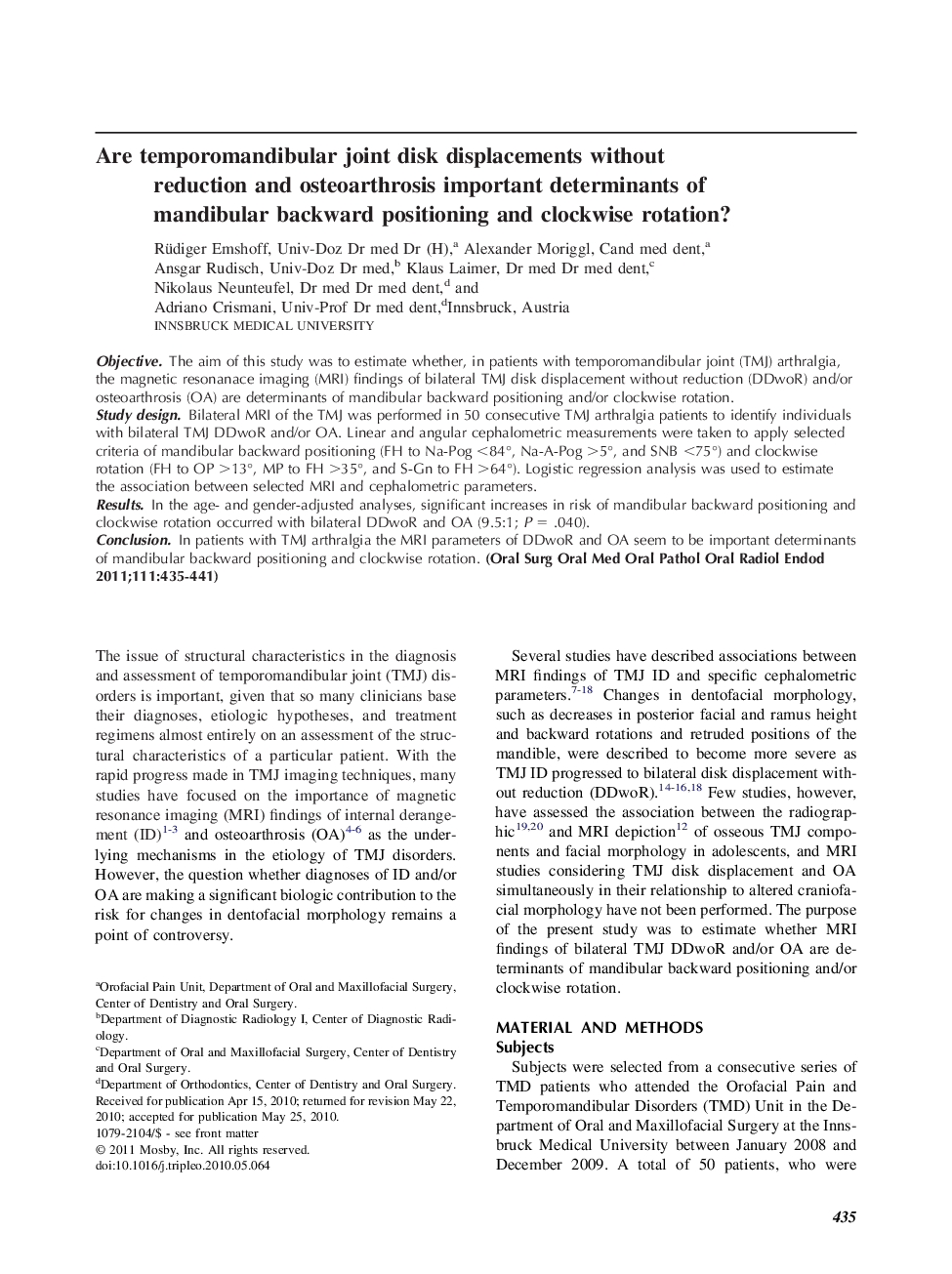| Article ID | Journal | Published Year | Pages | File Type |
|---|---|---|---|---|
| 3167018 | Oral Surgery, Oral Medicine, Oral Pathology, Oral Radiology, and Endodontology | 2011 | 7 Pages |
ObjectiveThe aim of this study was to estimate whether, in patients with temporomandibular joint (TMJ) arthralgia, the magnetic resonanace imaging (MRI) findings of bilateral TMJ disk displacement without reduction (DDwoR) and/or osteoarthrosis (OA) are determinants of mandibular backward positioning and/or clockwise rotation.Study designBilateral MRI of the TMJ was performed in 50 consecutive TMJ arthralgia patients to identify individuals with bilateral TMJ DDwoR and/or OA. Linear and angular cephalometric measurements were taken to apply selected criteria of mandibular backward positioning (FH to Na-Pog <84°, Na-A-Pog >5°, and SNB <75°) and clockwise rotation (FH to OP >13°, MP to FH >35°, and S-Gn to FH >64°). Logistic regression analysis was used to estimate the association between selected MRI and cephalometric parameters.ResultsIn the age- and gender-adjusted analyses, significant increases in risk of mandibular backward positioning and clockwise rotation occurred with bilateral DDwoR and OA (9.5:1; P = .040).ConclusionIn patients with TMJ arthralgia the MRI parameters of DDwoR and OA seem to be important determinants of mandibular backward positioning and clockwise rotation.
